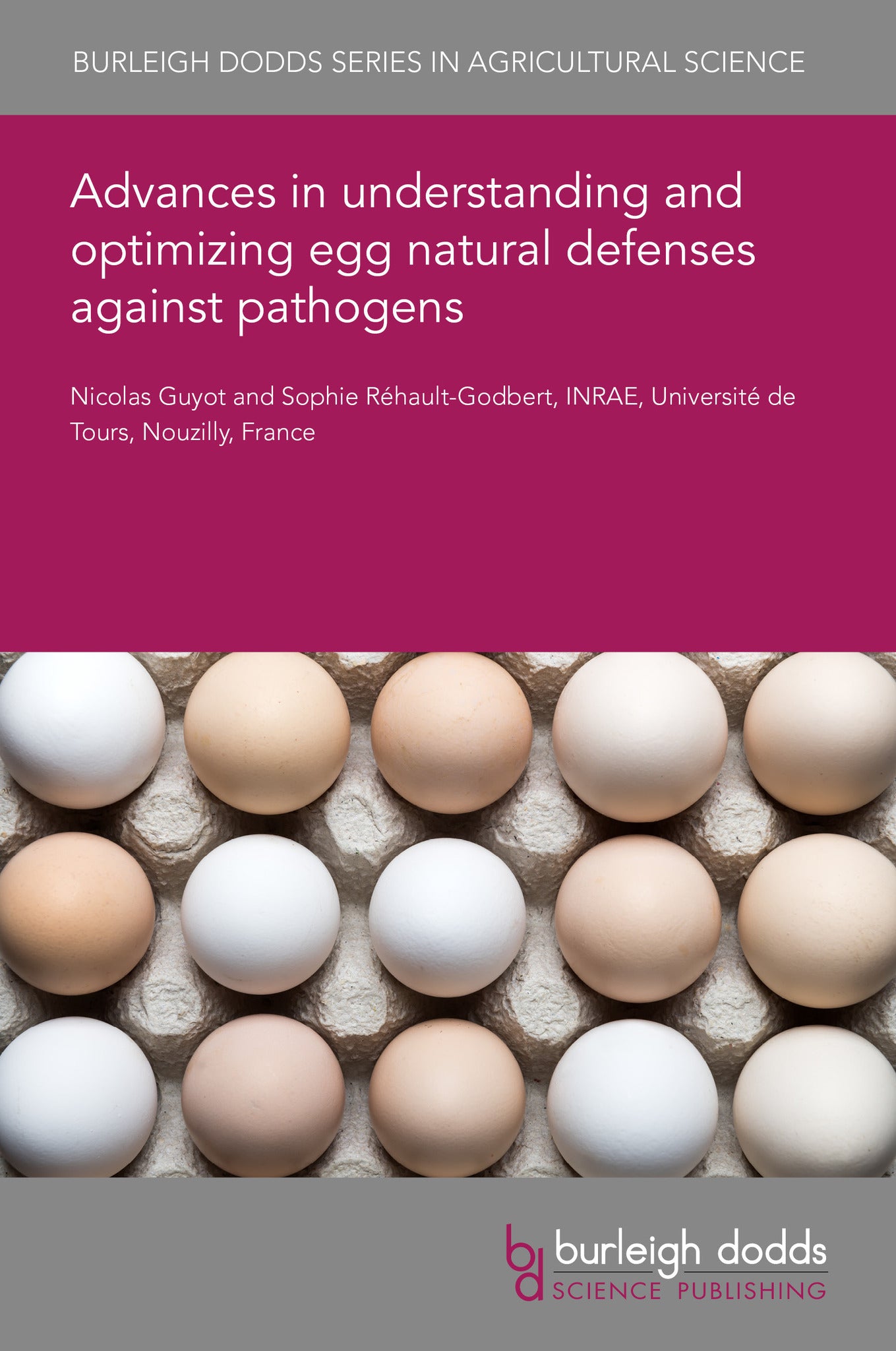We're sorry. An error has occurred
Please cancel or retry.
Advances in understanding and optimizing egg natural defenses against pathogens

Some error occured while loading the Quick View. Please close the Quick View and try reloading the page.
Couldn't load pickup availability
- Format:
-
14 November 2025

The chicken egg is a valuable source of macronutrients and micronutrients of high interest for the human diet. Besides these nutrients, it also contains numerous bioactive molecules and a sophisticated antimicrobial defense system, that are initially required for the development and protection of the bird embryo outside the maternal body. In table eggs (unfertilized eggs), these natural defenses help in protecting the egg, particularly the nutrient-rich egg yolk, from bacterial contamination, and thereby contribute to the hygienic quality of eggs. The aim of this chapter is to highlight the complexity and diversity of the egg antimicrobial defenses, their physical/physicochemical and antimicrobial properties and the factors responsible for the variability of these properties. The chapter includes sections describing each protective layer, namely the eggshell, egg white and the vitelline membrane, as well as a section reviewing the main antimicrobial proteins identified in the egg.

TECHNOLOGY & ENGINEERING / Agriculture / Animal Husbandry, Poultry farming, TECHNOLOGY & ENGINEERING / Agriculture / Sustainable Agriculture, TECHNOLOGY & ENGINEERING / Food Science / Food Safety & Security, Sustainable agriculture, Agricultural science, Food and beverage safety

- 1 Introduction
- 2 Eggshell
- 3 Egg white
- 4 Vitelline membrane
- 5 Antimicrobial proteins and peptides (AMPPs)
- 6 Conclusion and future trends
- 7 References



